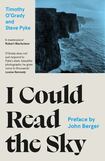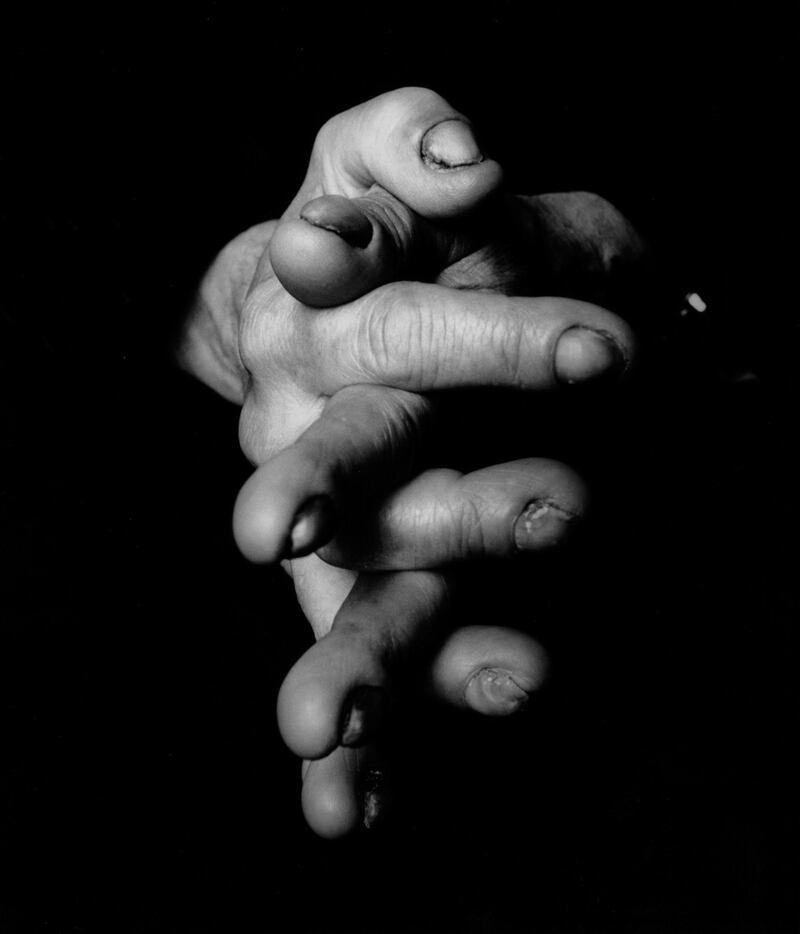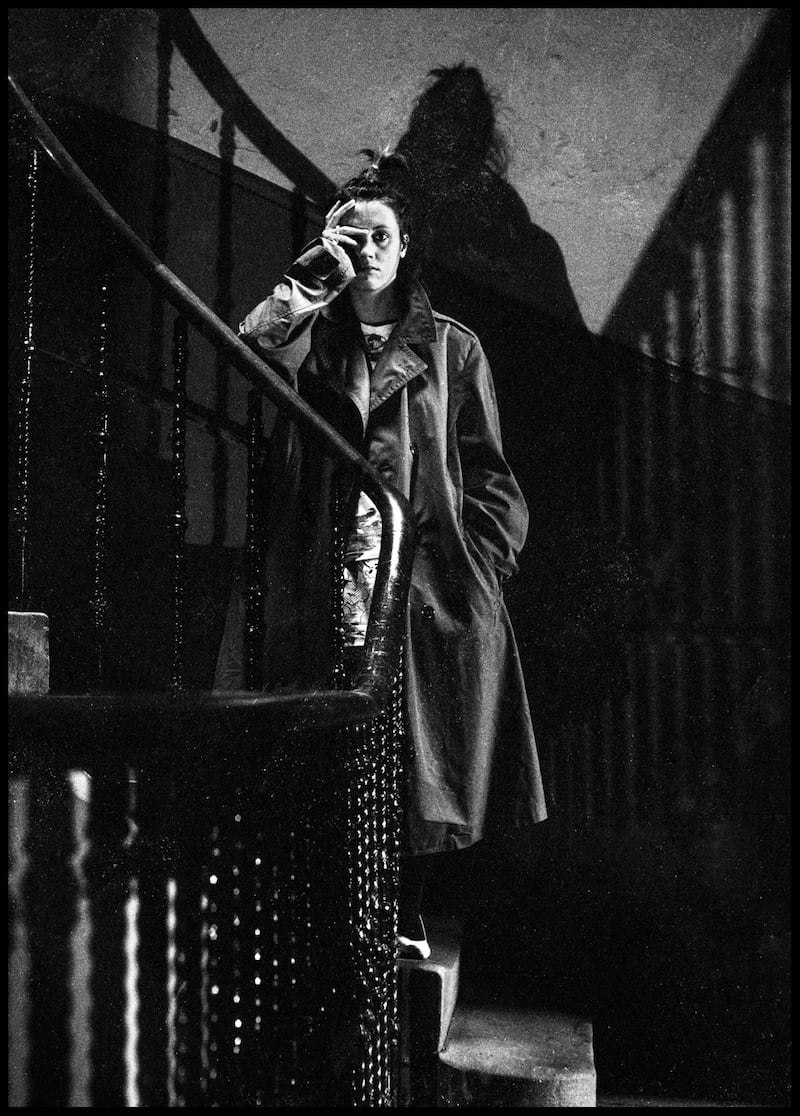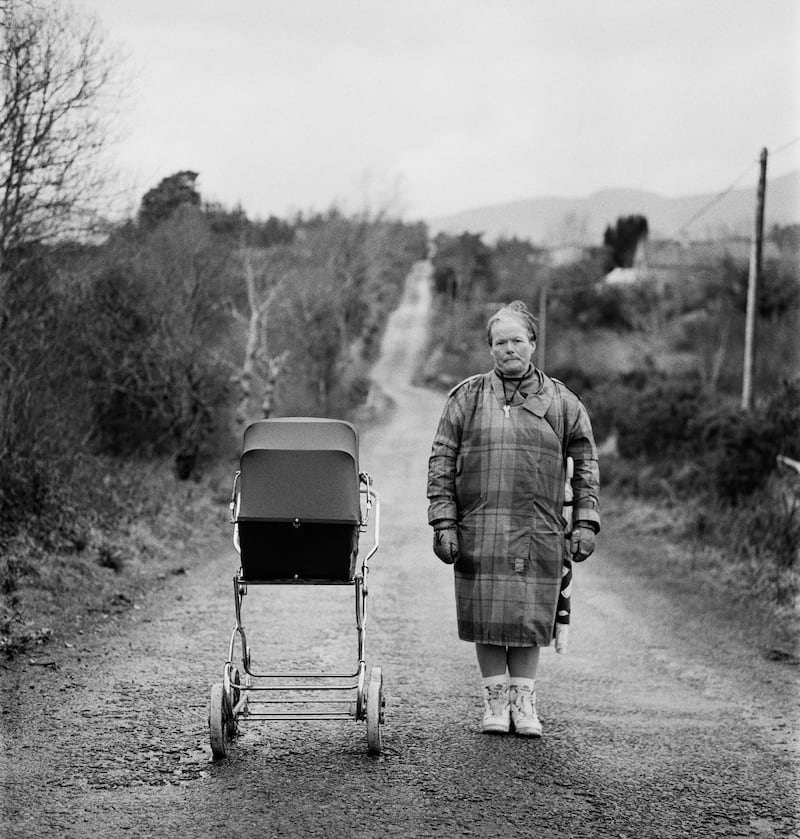
The Irish have been looking at the sky a long time. From the spéirbhean of ancient legend and mad Sweeney high in his branches, to the “hawklike man” glimpsed by Stephen Dedalus in Portrait of an Artist as a Young Man, the airborne have been a fascination to the island people whose descendants are portrayed and given voice in this wonderful book. Maybe the spirals carved into the Newgrange stones were representations of comets or diagrams of grief. The starry plough is a lot more than a flag.
The starkest metaphor of the suffering endured by Oscar Wilde’s fellow prisoners in Reading Gaol is that they are doomed to have only a “little tent of blue”. To be skyless is seen as a punishment, a sort of conquering. In the element of Irish traditional music that shares an airspace with the blues, the sky is a zone of separation. “The sea is wide and I can’t swim over,” laments the balladeer, “and neither have I wings to fly.”
In 1870, 1.8 million Irish-born people were in the United States. Twenty years later, 40 per cent of all Irish people then alive were living outside Ireland. The notion of an Ireland overseas was real. As every Irish family knows, it still is. That reality is at the heart of I Could Read the Sky, a book in which absence becomes a presence.


First published in 1997, this modern classic of Irish emigration is republished now with extra photographs and in an audiobook version featuring breathtaking music by the peerless Martin Hayes. Its reappearance is a cause for celebration. But it has also, in a powerful way, become a text that deserves and demands a different set of reflections.
Piers Morgan: ‘My DNA is predominantly Irish whether Ireland wants that or not’
Allen Bobinac: ‘For four weeks, I was sleeping in Stephen’s Green, surviving on €1 a day’
‘Dún Laoghaire is a place of such contrasts - it has yacht clubs and sunshine, but also a darker side’
Golfer Leona Maguire: ‘We came from a modest background. I don’t need a lot of money to keep me happy’
Every great artwork acquires new meanings and resonances, and every historical story worth anything is about now. In the quarter century since this book reinvented the Irish emigrant narrative mode, in the process adding significantly to Irish writing in general, the world has turned, and the Ireland once fled by multitudes has become a place to which immigrants and refugees go to seek protection. The tales of isolation and unfriendly stares included in I Could Read the Sky would seem familiar to those sleeping in tents on Irish streets, those to whom a navvy’s bedsit in Archway might feel considerably safer than does 21st-century Ireland of the Welcomes.
[ Irish Embassy in London to relocate after almost 75 years at landmark siteOpens in new window ]
Through the extraordinary grace and three-dimensionality of his playing, Martin Hayes is able to enter an air, to walk around in it, push at its walls, somehow aiming light at the features you hadn’t noticed before. His is a shimmering, ethereal music, alive to every nuance, always throbbing with feeling. Both sparse and ornate, ranging from richness to rawness, it is the perfect accompaniment to this book.
Steve Pyke’s photographs are magnificent chiaroscuros of Becketty emptiness, looming cloud, crashing breakers on ragged coasts. They speak of the workings of gravity and time on stone, the nexus of forces so tectonically powerful that a fictional character, Mother Nature, had to be invented to control them, or to give us the consolatory illusion that they are controlled. Every photograph in the book, being black and white, is full of colour, just as every analogue recording is more soundful than any digital soundscape. These pictures are not only about what you see, but what you feel.

John Berger’s introduction invites the reader to “listen” to the photographs. A few pages in, you know exactly what he’s getting at. No landscape in the world has been photographed more often than rural Ireland’s, but Pyke’s images don’t transmit the buzzing vacuousness of the frequently photographed. There is no glossing over, no slogans, no postcards; just the Ireland that existed before the Wild Atlantic Way was invented and will still be here when another, less mellifluously sayable term comes along. If anything is still here. These photographs are eco-parables in monochrome.
The faces in the images are looked at with care, without judgment. Not to offer judgment is of course a radical judgment of its own; that the people being photographed deserve and had better get respect. This book is a high example of the portrait as a form of storytelling. But it is also an act of reclamation. The most difficult thing for novelists to describe is something they see every day: the human face. Pyke’s faces in these pages speak volumes.
Timothy O’Grady’s supple, unshowy, beautiful writing will remind some readers of the late Dermot Healy’s prose and, also, of the works of WG Sebald, whose own relationship to photography was complex and strong, but it is always a voice all its own. What is really marvellous is O’Grady’s ability to return to the well of familiar images of Irish emigration while being so utterly devoid of cliche.
Part of what is so richly achieved comes from a kind of stylistic daring. Twelve sentences of Chapter 33′s opening paragraph begin with the same word, “she”, the phrases amassing like a cairn, allowing the writing to smuggle into itself an incantatory note that begs to be heard, not just read. At such moments, engaging with the book is like hearing Van Morrison, Lisa O’Neil or Radie Peat sing.


Every great writer needs to be a bit of a musician. O’Grady’s ear for dialogue is first rate – “fuck you and fuck your bicycle”, a man nicknamed The Tailor growls after a retreating postman – but he is also an exquisitely skilled deployer of quietness, of moments that fall and fail, where something is not quite said. He quilts together memories and fragments of stories but is brilliant at never getting in their way. The Tailor “hasn’t whitewashed the house since Kate left”. “Water drips from the roof down into the stone tank beyond the wall.” “Roscoe died in a pipe by the side of a road near Brighton. It was a big pipe waiting to be put underground. Seemingly he couldn’t get digs. He was living in the pipe. They found him dead there in the morning.”
Just as Martin Hayes’ music shimmers in the silences between the sounds, O’Grady knows when to stand back and let the wordlessness do the talking. His sense of narrative tact is sublime. The work unrolls with the dignified steadiness of a gorgeous slow air, the hardest thing to play, as every traditional musician will attest, with stubborn pride as occasional grace note.
[ Timothy O’Grady on creating I Could Read the Sky, a book for BealtaineOpens in new window ]
[ I Could Read the Sky, Revisited: an underground map of Irish LondonOpens in new window ]
This edition of I Could Read the Sky is crowdfunded. Congratulations and warm thanks to all who gave. It’s fitting that this new iteration has been brought into being by such a very old means. Many of the most important books ever published, including Johnson’s Dictionary, were funded entirely by subscription in advance, when readers felt that something valuable and sustaining to an entire culture was about to be voiced.
People have been trying to read the sky a long time. Rare masterpieces like this help us do it.
Joseph O’Connor’s novel My Father’s House is published by Vintage. He will read at the Ballaghdream Arts Festival, Co Roscommon, on August 8th. On August 31st, he will be interviewed by Colm Tóibín at Gorey Library as part of the Laureate For Irish Fiction Book Club.
Further reading and listening
Connemara and Aran, photography by Walter Pfeiffer. Published by Artisan House, Letterfrack, in 2017, this beautiful book presents poems by Eva Bourke, Moya Cannon, Michael Coady, Eamon Grennan, Josie Guairim, Joan McBreen, Máire Áine Ní Dhireáin, Mary O’Malley and others, with a preface by Michael Gibbons. A number of the featured poets read their work on an accompanying CD, which includes music by Kathleen Loughnane.
A Collection of Songs in the Traditional & Sean-nós Style is the latest output from the gorgeously named Nyaah Records (”They more or less had the same, what we call the same nyaah, the same style,” remarked singer Joe Heaney of his fellow sean-nós performers). Low-tech meets tradition on this marvellous album recorded on singers’ phones during the Covid lockdown. Hugely interesting liner notes by each singer are included.
Let the Record Show: Dexys Do Irish and Country Soul is the 2016 album by Kevin Rowland and his gifted band. To hear songs such as The Curragh of Kildare and Carrickfergus put across with such operatic passion in his Wolverhampton accent is to be reminded that emigrant Ireland is a place more complex and fascinating than we sometimes think, and that the book revealing most about the Anglo-Irish relationship is the telephone directory of any British city.











